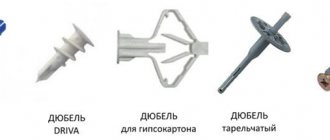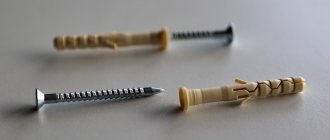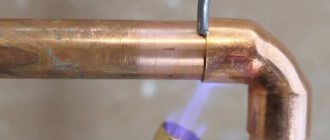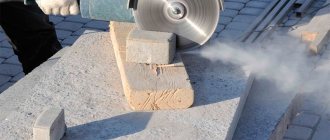A chiller is a refrigeration unit that is used to cool and heat fluid in refrigeration and air conditioning systems. During air conditioning, the heated liquid acts as a coolant, taking heat from air handling units or fan coil units. In production shops, the chiller is mainly used to cool process equipment, water, juices, beer wort and other products. Water is most often used as a coolant, which has better characteristics compared to a glycol mixture. Let's look at what a cooling chiller is, its features and operation scheme.
Types and applications
The wide power range of modern chillers, their efficiency and the possibility of remote location of the outdoor unit allow the use of this equipment for cooling any premises - from apartments to hypermarkets and production workshops.
They are also used in the bottling of water and drinks, the production of beer wort, in sports centers for cooling ice arenas, in pharmaceuticals and other fields of activity.
There are the following main types of equipment:
- Monoblocks. With this arrangement, the air condenser, hydraulic module and compressor are located in one housing.
- Chillers with an external block. In this case, the condenser is located outside the room.
- Equipment with water condenser. It is mainly used when it is necessary to minimize the size or it is impossible to use an outdoor air cooling unit.
- Heat pumps that provide heating or cooling of the coolant.
Below we will look at the circuit diagram and types of equipment connections, the features of the chiller and other points necessary for the correct selection of a refrigeration unit.
Fan coil control
Manual control allows you to regulate the supply of cold or hot coolant by turning off the tap manually or using the remote control.
Automatic control is carried out using an electrical or electromechanical thermostat. The device maintains the temperature set on the thermostat.
The devices are mounted in a pre-selected location, which can be on the wall, floor, or ceiling. If you plan to use climate control devices for cooling , then the best place would be the ceiling. To heat rooms, it is better to install them on the floor near the walls or in the lower sections of the walls.
Principle of operation
The theoretical basis on which modern refrigeration equipment - freezers, air conditioners and other installations, including chillers - is created and successfully operates is the second principle of thermodynamics. The refrigerant in the form of vapor in refrigeration units undergoes the so-called reverse Rankine cycle, which is a form of the reverse Carnot cycle. At the same time, the main process of energy transition is not based on compression or expansion - it is provided by phase transitions of liquid into vapor and the reverse process of condensation.
The industrial chiller consists of three main components . This is a compressor and two heat exchange circuits - a condenser and an evaporator. The main function of the evaporator is to remove heat from the cooled volume. To solve this problem, a flow of water and refrigerant is organized through it. At the same time, the temperature of the refrigerant rises, it boils and takes away thermal energy from the liquid. Due to this, water or any other heat carrier loses its temperature, simultaneously with the rise and boiling of the refrigerant.
Next, freon in gaseous form enters the compressor, where it comes into contact with the windings of the electric motor, ensuring their cooling. At this stage, the hot gas is compressed and heated to a temperature of 80-90 ºС, while simultaneously mixing with oil from the compressor.
At the next stage, the heated gas is supplied to the condenser, where it is cooled by a flow of cold air. Then the freon from the heat exchange circuit of the condenser enters the cooler, where it loses temperature, turns into a liquid state and passes through a filter drier, where it gets rid of moisture and a new cycle begins.
In the final part of the cycle, the refrigerant passes through a thermal expansion valve (TEV), where its pressure is reduced. When leaving the expansion valve, freon is in the form of a mixture of liquid and low-pressure vapor. In this form, it enters the evaporator, where the cycle is completed and the freon boils, turning into steam and taking thermal energy from the water. Next, the heated steam leaves the heat exchanger and the process repeats.
Russian-made units
Among all sectors of the air conditioning market in the Russian Federation, the market for freezing equipment is increasing its share the slowest of all. In percentage terms, the growth rate can be shown in the form of 12−18%. But at the same time, if you focus on financial indicators, the growth rate will be slightly higher - approximately 20-25%.
The most popular Russian brands of chillers are “Vakteh-Kholod” and “Xiron-Kholod”. Let's talk a little more about each of them.
The modules are intended for cooling production equipment (tomographs, lasers, injection molding machines, extruders) and for use in the creation of carbonated drinks. The cooling capacity of such installations starts from 2 kW. In this case, all chillers in the basic version are equipped with a hydraulic module.
The designs of the VMT series are produced in the form of a metal painted spatial frame, on which elements such as:
- freezing compressors;
- air heaters;
- freezing shut-off and control valves;
- electrical panel of power and control automation;
- receiving tank (for storing and collecting freon).
The hidden volume of the entire installation is covered with collapsible decorative panels. To put the equipment into operation, minimal steps are required to connect the device to the network and the cold water consumer.
Along with this, Vaktech-Holod chillers are undoubtedly the leading product of all available industrial freezing systems of the VTX series manufactured and supplied by this organization. The company offers the most extensive selection of universal refrigeration units, ranging from units with power from 1 to 860 kW.
Types of chillers
According to the principle of operation, all chillers can be divided into two main groups: vapor compression and absorption. In turn, according to the type of compressor, vapor compression units are divided into:
- Devices with a scroll compressor.
- Chillers with screw compressors.
- Piston systems.
- Rotary installations.
All of them can have a water or air cooled condenser. The latter, in turn, are divided into remote ones, with a separate location of the outdoor unit, and built-in ones - monoblocks.
The main design difference between a water-cooled chiller and an air-cooled chiller is the type of heat exchanger used. For air, tubular-finned structures are used, for water, plate structures are used, through which water circulates. The liquid in the water cooling system comes from a cooling tower or dry cooler - a dry cooler or dry cooler. The latter option is the most preferable for saving water consumption and, accordingly, reducing operating costs. The advantages of water cooling are the compactness of the equipment and the ability to be placed in interior spaces without contact with the outside environment.
Absorption chillers are divided into:
- According to the number of circuits - single- and double-circuit.
- According to the principle of heating the adsorbent: direct and steam heating.
- According to the adsorbent used - lithium bromide and ammonia.
What is the difference between a fan coil and an air conditioner?
Externally, fan coil units and household SCRs are practically indistinguishable. They have similar principles of operation and are used to purify, cool and heat air. The similarities between these two types of climate control equipment are:
- appearance of the equipment;
- designs;
- installation methods;
- functionality;
- control system.
The difference between a fan coil and an air conditioner
A significant difference between a fan coil unit and household split systems is that in the first unit freon is replaced with water or a solution of propylene or ethylene glycol. This has its advantages, but it also complicates the installation of climate control equipment.
There are also the following differences between these types of climate systems:
- Installing a fan coil unit with a chiller requires more equipment than installing air conditioning systems.
- The installation of fan coil units is more complex than the installation of split systems.
- In a conventional air conditioning system (ACS), the number of indoor units and the length of the refrigerant lines are limited, and several fan coil units can be connected to one chiller, the distance between which depends only on the power of the refrigeration unit.
- In the case of a fan coil unit, you can set a certain temperature in each room, and in one room you can set the unit for cooling, and in the other for heating.
- Chillers and fan coil units can be installed in buildings with a large area and a significant number of separate rooms, while split systems are designed to serve apartments, small offices and shops.
Scheme of operation of an industrial chiller
Let's look at what the chiller consists of and describe the operating diagram of the equipment. Currently, several schemes are widely used:
- Direct liquid cooling. It is used if the temperature difference between the coolant and the cooled water is less than or equal to 7°C. The coolant directly enters the heat exchanger, where it is cooled due to the boiling of freon.
- With intermediate coolant and secondary heat exchanger. It is used when the temperature difference between technical and mineral water is more than 7°C, as well as for cooling food products. The coolant from the consumer enters the secondary heat exchanger, which transfers energy to the intermediate working fluid circulating in the primary circuit. The latter is cooled by freon in the primary heat exchanger.
- Chiller with storage tank. Used when it is necessary to cool several pieces of equipment connected to one unit. With this chiller piping scheme, the coolant from the consumer enters one of the two parts of the tank, from where it is supplied by a pump to the heat exchanger. Chilled water is supplied to the second part of the tank, from where it is supplied to the consumer as needed. This eliminates frequent starts of the compressor.
- With intermediate coolant circuit and open secondary heat exchanger. This scheme is widely used in the production of “ice” water with a temperature of 0 - +1°C. In addition, it is also used for cooling technical fluids and is excellent for use as a “cold accumulator”. In this case, the cold is stored in the ice that forms on the heat exchanger.
Characteristics of climate control units
Different chiller models are characterized by different power, which can range from 5 kW to 9 thousand kW. Low-power products are great for work in an office or hotel, while high-power products are used in industrial enterprises and production workshops.
There are other characteristics that also give an idea about the device and may influence the choice of model. When choosing a chiller , you should study the following parameters:
- productivity, measured in kW, from 10 kW to several thousand;
- brand of refrigerant used (selected depending on the type of compressor and operating temperature environment)
- rated power can vary from 30 to 200 kW;
- geometric dimensions range from 0.5 to 4 meters for each parameter: length, width, height;
- weight from 0.1 to 2.0 tons.
- The chiller design can be monoblock or with a remote condenser.
Types and models of auxiliary devices, such as a compressor, evaporator, condenser are installed by the company that manufactured the chiller .
Main components of the chiller
To understand why a chiller is needed and how it is used, it is necessary to consider the functions and operation of each of its components.
Let's start with the compressor. It performs two main functions - compression and movement of refrigerant in the system. At the next stage, the heated refrigerant vapors are supplied to the condenser, where they are cooled by a flow of cold air and pass into the liquid phase. At the same time, the pressure and temperature of the refrigerant drops. The freon then enters the evaporator. There it heats up to boiling point and turns into a gaseous state. During this process, thermal energy is absorbed from water or other coolant circulating through the coolant. The vapor then enters the compressor again, and a new cycle begins.
The next main component is the air-cooled chiller condenser. It is a system in which the thermal energy absorbed by freon is released outside the building into the outdoor environment. As a rule, freon compressed by a compressor is pumped into it, where it is cooled to the condensation temperature and turns into a liquid aggregate state. The condenser is equipped with an axial or centrifugal fan for efficient air exchange. The second heat exchanger in the chiller system is the evaporator, which performs the opposite function to freon. In it, the liquid refrigerant absorbs heat from the coolant, boiling and turning into a gaseous state.
When operating a refrigeration unit, it is necessary to ensure precise regulation of the amount of refrigerant entering the evaporator. In this case, the volume of the refrigerant should directly depend on the temperature of its vapor at the outlet of this heat exchange unit. This function is performed by a thermostatic valve (TRV). Thanks to it, exactly as much refrigerant is supplied to the evaporator as can heat up to the boiling point and completely evaporate.
The operation of the chiller is also ensured by a number of auxiliary components and systems:
- High pressure switch. Provides system protection against exceeding the permissible pressure in the freon circuit.
- High pressure gauge. Necessary for visual monitoring of freon condensation pressure indicators.
- Filter drier. Provides removal of moisture and contaminants from the liquid refrigerant flow passing through it. If the filter is clogged or damaged, the efficiency of the system is significantly reduced.
- Solenoid valve. Electrically controlled shut-off valves. Shuts off the freon flow when the compressor stops working. This prevents liquid refrigerant from entering the evaporator, eliminating the possibility of water hammer and serious equipment damage. The valve opens automatically when the compressor starts.
- Sight glass. Necessary for visual monitoring of refrigerant flow when testing equipment operation. The presence of bubbles is a sign of freon deficiency.
- Humidity indicator. A sensor that issues a warning if there is moisture in the chiller refrigerant circuit. In this case, maintenance of the unit is necessary. As a rule, it has a simple indication, where green means the absence of moisture, and yellow means its presence.
- Capacity regulator or hot gas bypass valve. Optionally installed in the chiller system to match the compressor performance with the actual evaporator load. Located in a special line between the low and high pressure of the refrigeration system. Its installation allows you to prevent frequent starting of the compressor by modulating its power. When opened, hot refrigerant gas flows from the discharge line into the liquid freon stream entering the evaporator.
- Low pressure gauge. Necessary for visual monitoring of freon evaporation pressure indicators.
- Low pressure limit control system. Provides protection of the chiller system from pressure drop in the freon circuit and, accordingly, from freezing of moisture in the evaporator.
- Coolant pump. Provides water circulation in the refrigerated circuit.
- System for limiting the freezing temperature of liquid in the evaporator heat exchanger.
- Coolant temperature sensor in the cooling circuit.
- Coolant pressure gauge. Necessary for visual monitoring of pressure indicators of water, glycol solution or other coolant supplied for cooling equipment.
- Automatic coolant refill valve. Provides automatic filling of the container with water or other coolant when the minimum set level is reached. Water enters through a solenoid valve, which opens when the level drops and closes when the required volume is filled.
- Float switch for adjusting the water level in the tank.
- Temperature sensor of the heated coolant, which enters the chiller from the equipment.
- Relay to protect the evaporator from water freezing when the volume of circulating liquid is too low. It also protects the pump and gives an alarm if there is no water flow.
- A tank of increased volume for storing water and preventing frequent starts of the compressor.
As you can see, the structure and operating principle of the chiller is quite understandable even for non-professionals in the field of refrigeration technology. Below we will look at the answers to the most frequently asked questions.
Features of installation of such devices
Only an experienced specialist can save on installing a chiller. All other owners of this device will have to pay for the services of professional installers, since in this matter any mistake can be fatal. Installation begins with a thorough study of all technical documentation and manufacturer’s recommendations.
The chiller consists of many structural elements. The industrial model is best installed and launched with the help of experienced professionals (+)
After this, proceed directly to the installation. For the chiller, you should choose a support platform that can support the weight of this device.
A frame is mounted on the site, the position of which is carefully verified using a level. If there is no site with the required characteristics, an area suitable for installation should be concreted and a frame installed on it.
In this case, the vibration effect that occurs during operation of the chiller should be taken into account. The platform and frame must be installed in such a way that vibration is not transmitted to other building structures. Other elements of the system can also have an impact: pipes, air ducts, hydraulic module, etc.
The chiller is installed on a special frame, and it is necessary to take measures to protect objects surrounding the device from vibration effects
If the installation of the chiller is planned in a utility room inside the building, it is necessary to build a foundation that will rise above the floor level. This will reduce the overall inertia of the system, reduce the vibration impact, and improve the weight distribution of the unit.
The chiller itself is mounted on special spring or rubber supports in order to dampen vibration effects. Another layer of rubber is placed under these supports, then the structure is secured with anchor bolts. When deciding on a place to install the chiller, you should remember that there should be free space around the unit.
To install the chiller outdoors or on the roof of a building, use a special casing to protect the device from bad weather.
It will provide access to mechanisms for maintenance. In addition, air should circulate freely around the device to improve cooling of the capacitors. If the chiller is installed outside a building, it must be protected from contamination, such as fallen leaves.
If debris gets into the heat exchanger, it will cause the system to malfunction and cause serious equipment damage. It is unacceptable for the chiller body to be touched by foreign objects or communications, as vibration effects may be transmitted to them. Another important point when installing the chiller outside is the direction of the wind.
When installing indoors, the noise emission generated during operation of the unit should be taken into account. It makes sense to take care of additional sound insulation and think about how excess noise will affect neighboring rooms. It is not recommended to install the chiller next to living rooms.
If you plan to install other units next to the chiller, you need to make sure that the mechanism is not exposed to excessive heat, and that there are no obstacles to the free movement of air flows.
When installing the chiller externally, a special casing is used that protects the device from exposure to weather factors. An evaporator is placed inside the casing, a place is provided for mounting compressors on the side, and the condenser is installed on top.
In the same way, the unit is installed on the roof of the building. For indoor installation, the casing, of course, is not needed, but if in this case a model with a remote condenser is used, then part of the installation work is performed outside.
To install the chiller on the roof of a building, special construction equipment may be required, since the device has a large physical weight
When studying the technical documentation, you should pay attention to the order of installation of the frame under the chiller. For some high-performance models, special vibration supports are used, which do not need to be additionally secured with anchor bolts.
For individual units, it is not necessary to pour a separate foundation; it is enough to correctly install the frame and secure the device with bolts.
Couplings are usually used to connect pipes to the chiller pipes, since the diameter of these communications is small. The chiller is connected to the pipelines only after the unit is installed on the foundation and vibration supports. You should not perform this step in advance so as not to damage communications.
Regeneration of lithium bromide solution
As the lithium bromide absorbent absorbs refrigerant, it becomes more and more dilute, reducing its ability to absorb more refrigerant. To continue the cycle, the absorbent must be reconcentrated. This is achieved by continuously pumping the dilute solution from the absorber to a low temperature generator (5 in Figure 2), where the addition of residual heat (hot water, steam or natural gas) boils (4, in Figure 2) the refrigerant from the absorbent. Often this generator is used to recover waste heat from a plant. Once the refrigerant is removed, the reconcentrated lithium bromide solution is returned to the absorber, ready to resume the absorption process, and the free refrigerant is sent to the condenser (6, in Fig. 2). At this stage of regeneration, the waste heat from steam or hot water is useful.
How absorption refrigeration systems work
In absorption refrigeration units, the absorbent, generator, pump and heat exchanger replace the compressor of steam compressor (mechanical refrigeration) refrigeration systems. The remaining three (3) components also found in mechanical refrigeration systems, i.e. expansion valve, evaporator and condenser, are also used in absorption refrigeration systems.
Benefits of use
Using a chiller in a private home has a number of significant advantages:
- Possibility of heating all rooms in winter and cooling air in the summer heat.
- Maximum degree of energy saving when the system operates at different load levels.
- Easy to use.
- Possibility of setting individual microclimate parameters for each room.
- No need to install bulky radiators.
- Creating a comfortable microclimate in a matter of minutes.
In order to get the expected result from the operation of the chiller, its installation should be entrusted to experienced specialists. Experts will help you choose the right model and its power so that you can create a pleasant microclimate in your home in any weather with minimal energy consumption.
Absorption stage of absorption chillers
Absorption of refrigerant vapor in lithium bromide is an exothermic process. In the absorber, the refrigerant is “sucked” into an absorbent lithium bromide (LiBr) solution. This process not only creates an area of low pressure that draws a continuous flow of refrigerant vapor from the evaporator into the absorber, but also causes the vapor to condense (3, in FIG. 2) as it releases the heat of vaporization provided in the evaporator. This heat, together with the heat of dilution generated by mixing the refrigerant condensate with the absorbent, is transferred to the cooling water and released in the cooling tower. Cooling water is the utility in this cooling stage.
Vapor compression
Models of vapor compression devices may have slight changes from the classic design, but the basic design for all looks the same and includes:
- evaporator,
- capacitor,
- compressor.
The operating principle is based on the manifestation of the phenomenon of condensation with increasing pressure. The refrigerant vapor is compressed by a compressor, increasing the pressure to 30 atmospheres or more. The temperature of the substance rises to 70 degrees, and the condensation process begins.
Outside air blows over the condenser, lowering the refrigerant temperature. Freon gas condenses, turning into liquid. The hot composition cools, heating the air.
After passing through the control valve, the refrigerant expands and its temperature decreases as a result of the pressure drop. The refrigerant boils. After passing through the evaporator, freon changes its state of aggregation to gaseous. As a result, the coolant is cooled. This completes the cycle and the refrigerant is returned to the compressor unit.
These are the basic principles of the chiller operation scheme. There are devices that operate in a reverse cycle - designed for heating, not cooling .











